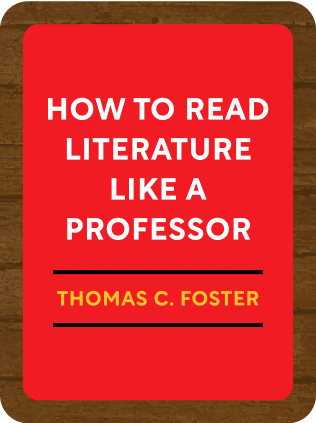

This article is an excerpt from the Shortform book guide to "How to Read Literature Like a Professor" by Thomas C. Foster. Shortform has the world's best summaries and analyses of books you should be reading.
Like this article? Sign up for a free trial here .
What do encoded and explicit sex symbolize in literature? Why is it important to look beyond sex when reading literature?
In literature, sex and sexuality are used symbolically in two different ways: encoded sex and explicit sex. Encoded sex means the author uses symbolic imagery to imply sex in a scene, but the reader never sees the sexual act take place. Explicit sex is when the author uses a sex scene to symbolize a larger theme in the story.
Continue reading for more information on what sex symbolizes in literature.
Actions Can Be Symbols
For most readers, recognizing objects as symbols comes easy, but it can be quite difficult to understand that actions can act as symbols, too. And to take that even further, sexual symbolism in literature can be difficult to pick up on.
Authors choose the actions that happen in a narrative carefully—each action must serve the plot in a novel, but some will also illuminate larger themes.
Sex in Literature
In literature, sex and sexuality are used symbolically in two different ways:
- Encoded sex: The author uses symbolic imagery to imply sex in a scene, but the reader never sees the sexual act take place.
- Explicit sex: The author uses a sex scene to symbolize a larger theme in the story.
Encoded Sex
Sex is often disguised in literature and in film. At first, the primary reason for sexual symbolism was censorship. Artists were not allowed to depict sex on the page or on screen, so they had to find other ways of getting the point across.
- Example: In the film North by Northwest, Cary Grant kills the villain and saves Eva Saint from falling off a rock cliff. The scene then cuts to a sleeping compartment on a train, where Grant is pulling Saint up into the bed. The next shot, which ends the film, is of a train entering a tunnel. This is an example of sexual symbolism.
Once Freud published The Interpretation of Dreams in 1900, literature began to change. Suddenly, writers began to realize that they could encode sex into their work. And readers learned that sex might be encoded into their reading, as well.
- Example: In Ann Beattie’s “Janice,” a young woman named Andrea has an affair. Her lover buys her a bowl, which she begins to obsess over. For some reason, she will not allow her husband to put his keys in her bowl. This is an example of a sexually coded image. Andrea’s bowl represents her identity as a sexual woman. It was gifted to her by a lover. Now, Andrea can’t allow her husband’s keys to enter her bowl. Keys, too, are a common sexual symbol for male sexuality, especially when associated with a lock.
Even in our age of explicit sexuality, readers should be on the lookout for images and scenes that evoke sex and sexuality, even in things as common as keys in a bowl.
Explicit Sex
Censorship ended in the United States in 1959. Less than a century later, most sexual writing has become either cliché or pornographic. So authors only include sex scenes in a novel as a literary device, when they are trying to illuminate other themes, as well.
When analyzing a sex scene, you really can’t go wrong. Just like in life, sex can mean many things and have many consequences, such as
- Passion
- Submission
- Rebellion
- Resignation
- Domination
- Enlightenment
- Childbearing
Examples:
In John Fowle’s The French Lieutenant’s Woman, the character Charles is a young man who is about to enter into an arranged marriage, which he dreads. One night, he finds himself in the hotel room of a woman named Sarah, who is not his intended. He carries her to the bed and “ninety seconds” later, they have made love. For Charles, Sarah is not just a woman, she is all the possibilities that he is giving up in life by getting married. Charles is only given a short chance to explore those options, literally and metaphorically.
In Henry Miller’s novels, there are a lot of explicit sexual scenes. Miller uses these sex scenes to celebrate his freedom from censorship and claim his freedom as a writer.
In Vladimir Nabokov’s Lolita, the small amount of explicit sex in the novel is predatory and evil. However, Nabokov manages to engage the reader’s sympathy just enough to implicate us in the act. The sex scene is a mirror of the narrative—an exploration of the reader’s philosophical tolerance.
In Edna O’Brien’s novels, sex is a political act. Sex gives her female characters the chance to throw off the religious and societal restrictions that have repressed them.
In order to read like a professor, you have to be able to look beyond the sex and draw conclusions about how the themes of the novel could be represented there.

———End of Preview———
Like what you just read? Read the rest of the world's best book summary and analysis of Thomas C. Foster's "How to Read Literature Like a Professor" at Shortform .
Here's what you'll find in our full How to Read Literature Like a Professor summary :
- How to get more out of the novels that you read
- Why you should focus on memory, symbols, and patterns to understand literature better
- Why sex scenes aren't always about sex






